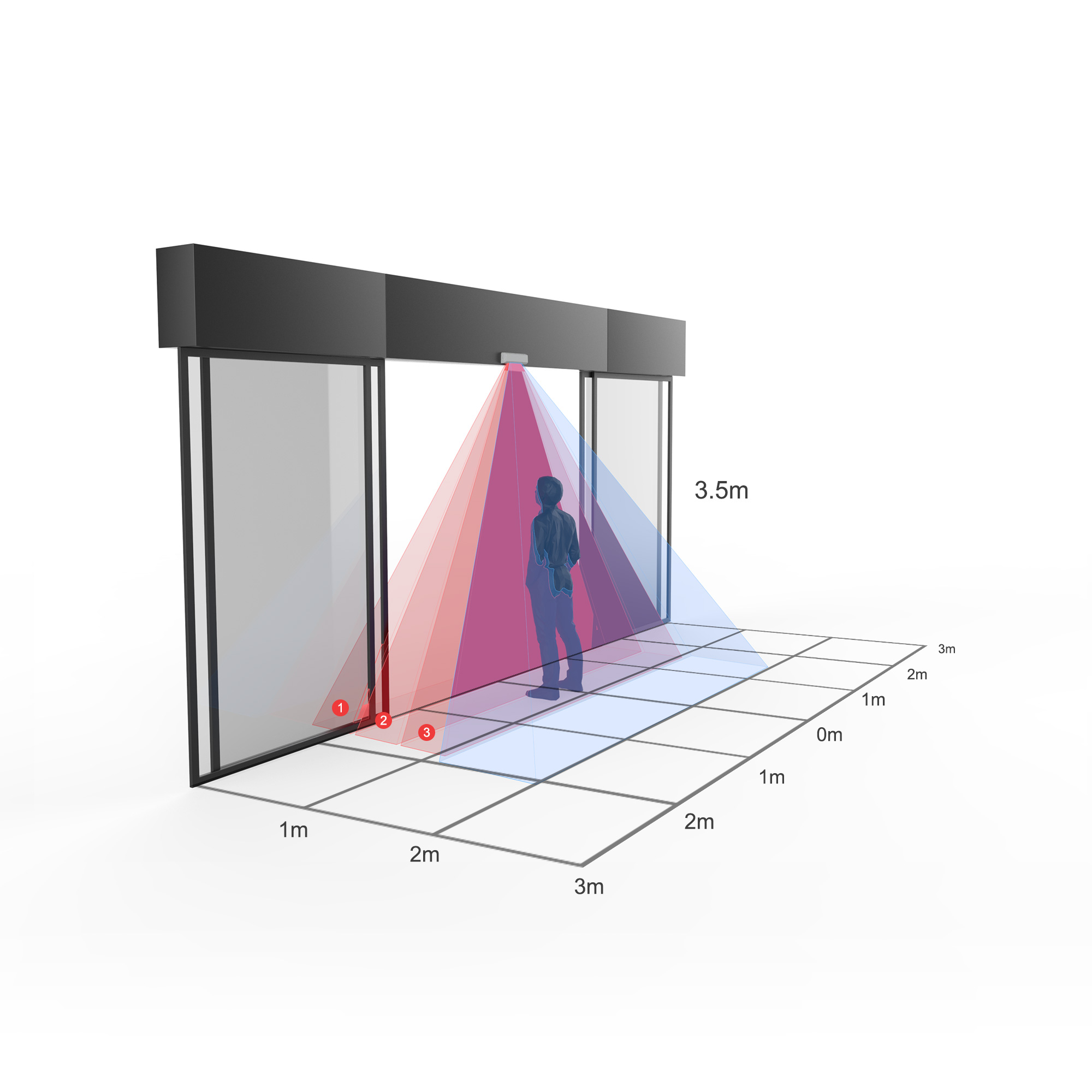Ci sono diversi tipi di sensori automatici a infrarossi per porte disponibili?
I sensori a infrarossi automatici delle porte sono all'avanguardia nelle moderne soluzioni di ingresso, fornendo un accesso senza contatto e comodo in varie impostazioni, dagli edifici commerciali alle strutture sanitarie. Tuttavia, non tutti sensori infrarossi automatici per porte sono creati uguali. In questo articolo esploreremo i diversi tipi di sensori infrarossi automatici per porte disponibili sul mercato, evidenziandone le funzionalità e le applicazioni.

1. Sensori infrarossi attivi
Sensori infrarossi attivi, noti anche come sensori IR attivi, emettono raggi infrarossi attraverso l'area di ingresso. Quando un oggetto o una persona interrompe questi fasci, il sensore rileva il cambiamento e attiva l'apertura della porta. I sensori attivi a infrarossi sono comunemente utilizzati nelle porte scorrevoli e oscillanti, offrendo un funzionamento affidabile ed efficiente.
2. I sensori passivi a infrarossi
I sensori passivi a infrarossi, o sensori passivi a infrarossi, rilevano l'energia termica emessa dagli oggetti nel loro campo visivo. Quando una persona o un oggetto caldo entra nell'area di rilevamento del sensore, innesca l'apertura della porta. I sensori passivi a infrarossi sono spesso utilizzati nelle porte scorrevoli automatiche e sono eccellenti per il risparmio energetico perché si attivano solo quando necessario.
3. I sensori a microonde
I sensori a microonde utilizzano la tecnologia a microonde per rilevare il movimento e innescare l'attivazione della porta. Questi sensori emettono segnali a microonde e misurano il riflesso di tali segnali fuori dagli oggetti vicini. Sono altamente efficaci nel rilevare il movimento, anche attraverso muri o ostacoli. I sensori a microonde sono spesso utilizzati in aree ad alto traffico e possono essere combinati con altri tipi di sensori per una maggiore affidabilità.
4. I sensori ad ultrasuoni funzionano sul principio dell'invio e della ricezione di onde sonore ad alta frequenza. Quando un oggetto o una persona si muove all'interno della portata del sensore, riflette le onde sonore verso il sensore, innescando l'attivazione della porta. I sensori ad ultrasuoni sono adatti per aree con minime fluttuazioni di temperatura e sono spesso utilizzati in porte scorrevoli automatiche.
5. Per aumentare la precisione e l'affidabilità, alcuni sistemi automatici di porte incorporano una combinazione di tipi di sensori. Ad esempio, un sistema può utilizzare sia sensori a infrarossi attivi che sensori a microonde. Questa combinazione può ridurre la probabilità di false attivazioni e migliorare le prestazioni complessive, rendendola ideale per ingressi con traffico pedonale elevato.
6. Touchless Technologies
I progressi tecnologici hanno dato vita a soluzioni di ingresso touchless che utilizzano una combinazione di sensori, incluso l'infrarosso, per fornire un accesso senza soluzione di continuità. Questi sistemi possono essere integrati con riconoscimento facciale, riconoscimento gestuale e app per smartphone per un'esperienza completamente touchless.
7. Sensori di sicurezza
La sicurezza è fondamentale nei sistemi automatici di porte. I sensori di sicurezza, spesso utilizzati in combinazione con sensori a infrarossi, rilevano ostacoli o oggetti nel percorso della porta, assicurando che la porta si fermi o inverti il suo movimento per prevenire incidenti.
Conclusione
I sensori a infrarossi automatici della porta si sono evoluti significativamente per soddisfare le diverse esigenze delle varie applicazioni. Dai sensori a infrarossi attivi e passivi ai sensori a microonde e a ultrasuoni, la gamma di scelte consente soluzioni personalizzate in diverse impostazioni. Che si tratti di fornire un accesso efficiente dal punto di vista energetico, migliorare la sicurezza con tecnologie touchless o migliorare la sicurezza con sensori combinati, la varietà di sensori automatici a infrarossi delle porte assicura che i moderni sistemi di ingresso possano soddisfare le esigenze degli ambienti dinamici odierni. Comprendere i diversi tipi di sensori disponibili è fondamentale per selezionare la soluzione più adatta alle vostre esigenze specifiche.







